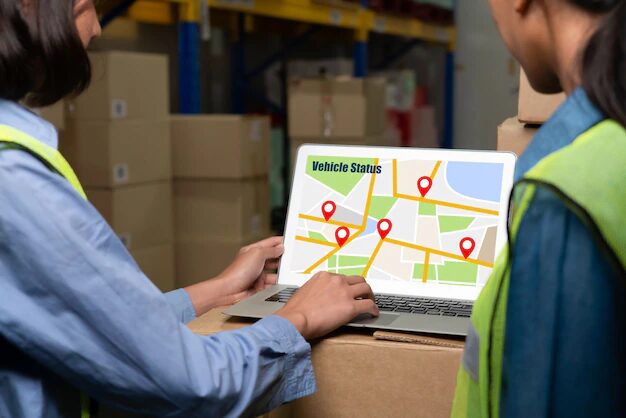If you are looking to ship goods from China to Finland, you might be wondering about the logistics of international shipping. International shipping can be complex and challenging, but with some planning and preparation, you can make it easier and more efficient. In this blog post, we will cover some key considerations for shipping from China to Finland, such as choosing the right shipping method, preparing the customs documentation and regulations, tracking and managing your shipment, finding tips for cost-effective shipping, and overcoming common challenges. We will also provide some resources and recommendations for finding reliable shipping partners.
Choosing the right shipping method

One of the first decisions you need to make when shipping from China to Finland is the shipping method. There are three main options: air freight, sea freight, and rail freight. Each option has its own advantages and disadvantages, depending on factors such as the size, weight, value, urgency, and destination of your shipment.
Air freight is the fastest and most reliable option, but also the most expensive. It is suitable for small, light, high-value, or time-sensitive shipments. Air freight usually takes 3 to 7 days to deliver from China to Finland.
Sea freight is the cheapest and most eco-friendly option, but also the slowest and most unpredictable. It is suitable for large, heavy, low-value, or non-urgent shipments. Sea freight usually takes 30 to 45 days to deliver from China to Finland.
Rail freight is a relatively new and emerging option that offers a balance between speed, cost, and reliability. It is suitable for medium-sized, medium-weight, medium-value, or moderately urgent shipments. Rail freight usually takes 15 to 20 days to deliver from China to Finland.
Customs documentation and regulations

Another important aspect of international shipping is the customs documentation and regulations. You need to prepare the necessary paperwork and comply with the rules and requirements of both the origin and destination countries. Failing to do so can result in delays, fines, penalties, or even confiscation of your goods.
Some of the common documents you need for shipping from China to Finland are:
- Commercial invoice: This is a document that shows the details of your transaction, such as the seller, buyer, description, quantity, value, and terms of sale of your goods.
- Packing list: This is a document that shows the details of your packaging, such as the number, weight, dimensions, and contents of your packages.
- Bill of lading: This is a document that shows the details of your shipment, such as the carrier, consignee, origin, destination, mode of transport, and delivery date of your goods.
- Certificate of origin: This is a document that shows the origin country of your goods. It may be required for preferential tariff treatment under certain trade agreements.
- Other documents: Depending on the type and nature of your goods, you may need other documents such as licenses, permits, certificates, or declarations.
You should also be aware of the customs duties and taxes that apply to your shipment. Customs duties are fees that are charged by the customs authorities based on the value and classification of your goods. Taxes are fees that are charged by the government based on the type and quantity of your goods. The amount and rate of customs duties and taxes vary depending on the origin and destination countries.
Tracking and managing your shipment

Once you have chosen your shipping method and prepared your customs documentation and regulations,
you need to track and manage your shipment throughout its journey. Tracking your shipment allows you to monitor its status and location at any time. Managing your shipment allows you to handle any issues or problems that may arise along the way.
There are different ways to track and manage your shipment depending on your shipping method and partner. Some common methods are:
- Online tracking: This is a service that allows you to access real-time information about your shipment through a website or an app. You usually need a tracking number or a reference number to use this service.
- Email notifications: This is a service that sends you email updates about your shipment at regular intervals or when there are significant events or changes.
- Phone calls: This is a service that allows you to contact your shipping partner directly by phone to get information or assistance about your shipment.
- Customer service: This is a service that provides you with a dedicated representative or agent who can answer your questions or address your concerns about your shipment.
Tips for cost-effective shipping

Shipping from China to Finland can be costly if you don’t plan ahead and optimize your process. Here are some tips for reducing your shipping costs and maximizing your profits:
- Compare different shipping options and rates: You should always compare different shipping options and rates from different carriers or providers before making a decision. You can use online tools or platforms that allow you to compare multiple quotes at once.
- Negotiate with your shipping partner: You should always try to negotiate with your shipping partner for better terms or discounts. You can leverage factors such as volume, frequency, loyalty, or referrals to get a better deal.
- Optimize your packaging: You should always optimize your packaging to reduce the weight and dimensions of your shipment. You can use lighter materials, smaller boxes, or more efficient packing methods to save space and money.
- Consolidate your shipments: You should always consolidate your shipments whenever possible to reduce the number of packages and shipments you send. You can use a freight forwarder or a consolidator to combine multiple orders or shipments into one.
- Avoid peak seasons and rush hours: You should always avoid peak seasons and rush hours when shipping from China to Finland. These are times when the demand and the prices for shipping are higher than usual. You can plan ahead and ship earlier or later to avoid these times.
Common challenges and how to overcome them

Shipping from China to Finland is not without its challenges. You may encounter some difficulties or obstacles that can affect your shipping experience. Here are some common challenges and how to overcome them:
- Language barrier: You may face a language barrier when communicating with your shipping partner or the customs authorities in China or Finland. You can overcome this by using a translator, an interpreter, or a bilingual staff member to help you.
- Cultural differences: You may face cultural differences when dealing with your shipping partner or the customs authorities in China or Finland. You can overcome this by learning about the customs, etiquette, and expectations of both countries and respecting them.
- Delays: You may face delays in your shipment due to factors such as weather, traffic, accidents, strikes, holidays, or inspections. You can overcome this by tracking your shipment regularly, communicating with your shipping partner promptly, and having a contingency plan in case of emergencies.
- Damages: You may face damages to your goods during transit due to factors such as mishandling, accidents, theft, or vandalism. You can overcome this by packing your goods securely, labeling them clearly, insuring them adequately, and filing a claim if necessary.
- Lost or missing shipments: You may face lost or missing shipments due to factors such as misrouting, mislabeling, theft, or human error. You can overcome this by tracking your shipment regularly, verifying your information accurately, reporting any issues immediately, and filing a claim if necessary.
Finding reliable shipping partners and resources

One of the most important factors for successful shipping from China to Finland is finding reliable shipping partners and resources. You need to work with trustworthy and professional people and organizations that can help you with your shipping needs and goals.
Some of the reliable shipping partners and resources you can find are:
- Freight forwarders: These are companies that act as intermediaries between you and the carriers or providers. They can handle all aspects of your shipment from start to finish, such as booking, documentation, customs clearance, transportation, delivery, and more.
- Shipping agents: These are individuals or companies that represent you or the carriers or providers in the origin or destination country. They can assist you with local services such as loading, unloading, warehousing, distribution, and more.
- Shipping platforms: These are online tools or platforms that allow you to access various shipping services and information in one place. They can help you compare different shipping options and rates, book your shipment online, track your shipment online, manage your shipment online, and more.
- Shipping associations: These are organizations that represent the interests and standards of the shipping industry. They can provide you with guidance, education, training, certification, networking, advocacy, and more.




